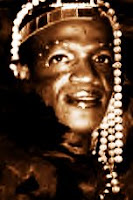 I'm dying to read this new book, which by all accounts is a masterpiece, about the Great Migration, the mid-20th-century journey of millions of African Americans from the South to the North. The Warmth of Other Suns by Isabel Wilkerson, who spent some 20 years researching and writing this vital, epic story that had been left a mere footnote by white historians.
I'm dying to read this new book, which by all accounts is a masterpiece, about the Great Migration, the mid-20th-century journey of millions of African Americans from the South to the North. The Warmth of Other Suns by Isabel Wilkerson, who spent some 20 years researching and writing this vital, epic story that had been left a mere footnote by white historians.After reading several glowing pieces about it, I decided I can't wait to get it from the library, let alone till it comes out in paperback, so budget be damned, I'm buying this book now. Except, shoot, it doesn't seem to have even reached bookstores, online or brick-and-mortar, yet. So I'll have to wait another week or two till it arrives. I'm snatching it up, though, the moment I can.
In 2010, more than 50 years after the peak of the Great Migration, many of whose participants ended up in New York, the Democratic Party sees fit to run a statewide electoral slate that is all white. Cuomo for governor. Duffy for lieutenant governor. Di Napoli for controller. One of five primary candidates, all white, for attorney general. Gillibrand, who was appointed to fill Hillary Clinton's senate seat when she moved to the state department, in a special election to begin a full term. And Schumer for re-election to the senate. Not just all white, but all awful in a variety of ways, none of them in any way a friend to the oppressed or the working class as a whole.
It is the last straw after a long history of the Democrats relying on the votes and support of the Black and other communities of color, then betraying them again and again. So a new party has formed, and after a heroic grassroots effort to collect petition signatures, has won ballot status for the upcoming election. The Freedom Party of New York State is "a Black and Latino led political party open to people of all backgrounds." Its candidates: New York City Councilperson and former Black Panther Party member Charles Barron for governor, and for lieutenant governor and attorney general Buffalo activist Eva Doyle and lawyer-activist Ramon Jimenez of the Bronx. This will be the first time in many years--ever, come to think of it--that I'll be voting in the statewide election because it's the first time a slate committed to fighting for our class interests, a slate of longtime organizers and activists who are of and for the oppressed and exploited, has been on the ballot. What a welcome development.















